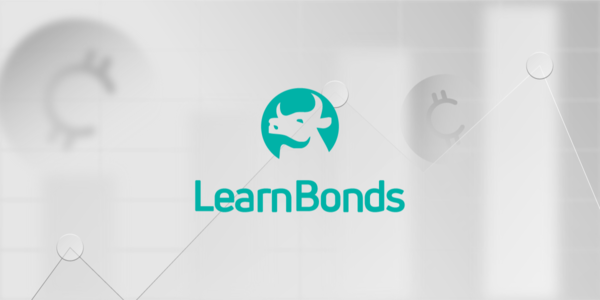Forex Trading in South Africa – A Beginner’s Guide
Forex trading is the process of buying and selling currency pairs like USD/GBP and EUR/USD. The main concept is that you will be looking to profit when the exchange rate of a forex pair goes up or down. If you’re based in South Africa and this is something you wish to do, there are heaps of regulated platforms active in the market.
However, it’s not as simple as opening an account, depositing funds, and then making unprecedented profits. On the contrary, you need to learn the ins and outs of how forex trading works, and you also need to compare platforms to ensure you pick the right broker for you.
In this guide, we explain everything there is know about forex trading in South Africa. On top of discussing key terms and strategies and reviewing the best forex brokers, we also provide a step-by-step walkthrough so that you can get started with a forex trading account today!
-
-
How to Start Trading Forex in South Africa in 3 Quick Steps
Don’t have time to read our guide all of the way through? Below you will find our three quick steps on how to start trading forex in South Africa right now!
Step 1: How to Pick a Forex Trading Platform in South Africa?
Trading forex in South Africa has never been easier, with heaps of online trading platforms allowing you to buy and sell currencies at the click of a button. With this in mind, your first port of call will be to pick a South Africa forex broker that meets your needs.
For example, are you looking for a platform that lists a specific currency pair, or are you more concerned with fast withdrawal times? Either way, you need to do some homework before parting with your money. To help you out, below you will find our picks for the best South Africa forex trading platforms of 2025.
1. Plus500 - Leading South Africa Forex Trading platform
Based in the UK, Plus500 is an established online forex broker that is popular with South African traders. Plus500 is perfect for newbie traders. Its proprietary trading platform is suited for newbies, so you should have no issues navigating yourself from asset to asset.
In the forex department specifically, you will be able to trade dozens of currencies. This includes majors, minors, and several exotics. Plus500 does not charge any trading commissions at all, so it's only the spread that you will pay. The broker also offers leverage on forex ,which again stands at 30:1 on major pairs and 20:1 on minors/exotics.
There are no fees to deposit or withdraw funds either. Supported payment methods at Plus500 include a South African debit/credit, bank account, or Paypal. The broker has a minimum deposit policy of £100, which is just over 2,000 rand. This ensures that you are able to start off with smaller stakes.
When it comes to regulation, Plus500 is a publicly-listed company that forms part of the London Stock Exchange. It also holds several licenses, including that of the FCA, CySEC, ASIC, and MAS. As such, this ensures that you are able to trade forex in a safe and secure online environment.
Our Rating
- Regulated by the FCA and ASIC
- 0% trading commissions
- Mobile forex trading app available
- No educational material
80.5% of retail investor accounts lose money when trading CFDs with this provider.2. FinmaxFX - Forex Trading Site With High Leverage Limits
As most online brokers will cap your leverage limits to 30:1 when you trade forex as a retail client, you will need to use particular platforms if you want more. One of the most prominent in this respect is that of FinmaxFX. This online broker - which covers forex, cryptocurrencies, and heaps of other CFD products - offers leverage of up to 200:1 on major pairs.
This means that a $500 account balance would allow you to trade with up to $100,000. This is reduced to 100:1 on minor and exotic pairs, which is still monumental. As always, just tread with caution when trading with leverage, especially at these levels.
FinmaxFX offers close to 60 forex pairs, including a selection of exotics. This broker doesn't have it's own proprietary trading platform, so all trading platform takes place on MetaTrader 5, offering access to forex signals, trading robots and a range of other advanced tools.
If you do opt for FinmaxFX, we should note that its fee and spreads are slightly higher than the other brokers on this list. The forex trading platform requires a minimum deposit of $250 (about 4,200 rand). You can get money into the broker with your local bank account, debit/credit card, e-wallet, or Bitcoin.
Our Rating
- Leverage of 1:200 on major forex pairs
- Educational materials
- Bonus available to new customers
- Doesn't hold a tier-one license
There is no guarantee you will make money with this provider3. AvaTrade - Global Forex Broker With MT4 & MT5
AvaTrade is a global forex and CFD broker that has clients from every corner of the world, including a strong following in South Africa. The broker is particularly popular because of its support for both MT4 and MT5. This means that you will be able to integrate your forex expert advisors or trading robots with the broker, in addition to a range of advanced trading toos.
The broker is also known for its competitive pricing structure. For example, you can trade major currency pairs from just 0.9 pips, and slightly more on minors. There's no commission for forex trading on AvaTrade, either.
One of the notable aspects of AvaTrade is that it offers options trading for forex, in addition to CFDs. You can trade with up to 1:400 leverage when using AvaTrade via MT4 or MT5, and even exotic pairs can be traded with 1:50 leverage or even higher.
When it comes to the safety of your funds, AvaTrade holds licenses in multiple countries. Not only does this include South Africa, but also Canada, Japan, and Ireland. You can also keep tabs on your forex portfolio through the AvaTrade mobile forex trading app, which is available on iOS and Android.
Our Rating
- Spreads from just 0.9 pips
- Multiple licenses
- Both MT4 and MT5 supported
- Sparse educational resources
There is no guarantee you will make money with this provider4. IG - Established Broker With Over 90+ Forex Pairs
IG is an industry leader in the online brokerage space. Launched way back in 1974, the platform offers everything from traditional share trading, CFDs, spread betting, and, of course, forex. In fact, the online broker gives you access to over 90+ currency pairs.
This is one of the largest collection of forex pairs among all brokers. On top of covering all major and minor pairs, you will also have access to lots of exotic currencies. This includes a trading pair against the South African rand - USD/ZAR - so there's no shortage of trading options.
When it comes to fees, IG does not charge any trading commissions when you buy and sell forex. Spreads are also very competitive, with EUR/USD starting at just 0.8 pips. The likes of AUD/USD and GBP/USD are slightly higher at 1 pip. Supported trading platforms These include MT4, ProRealTime, and IG's own proprietary platform.
Accounts at IG can be opened quickly, albeit, you will need to meet a minimum deposit amount of £250 (about 5,300 rand). You can fund your account with your everyday debit/credit card or bank account, but e-wallets are not supported. If you use MasterCard or Visa, this does attract a transaction fee of 0.5% and 1%.
- Spreads from 0.6 pips
- Supports MT4 trading platform
- Excellent research department
- 1% fee when using Visa and 0.5% via MasterCard
There is no guarantee you will make money with this provider.Step 2: Learn How the Forex Market Works in South Africa
Now that you have established the online broker that you wish to sign up with, we now need to discuss the fundamentals of forex trading. As there’s the risk of losing money, it’s super-important that you know what you are doing before you begin forex trading.
As such, make sure you read through this section in its entirety before moving on to the next step!
What is Forex Trading?
In a nutshell, forex trading is an investment sector that involves buying and selling currency pairs. The main concept is that you will be looking to make a profit when the exchange rate of the pair goes up or down.
Whether its EUR/USD, GBP/USD, or USD/ZAR, each and every currency pair will have an exchange rate that moves on a second-by-second basis.
This makes it highly conducive for traders, as the forex markets operate on a 24/7 basis. In order to make money, you will need to speculate which way you think the pair will move in the short-term.
For example, if you are trading EUR/USD and you think the Euro will increase in value against the US dollar, then you need the price of the pair to go up. If it does, you make money. If the exchange rate instead goes down, you will lose money. This is why it is important to have sensible stop-loss orders and risk management tools in place.
In order to clear the mist, let’s look at a quick example of how a forex trade works in practice.
- You want to trade the exchange rate between the US dollar and South African rand
- As such, the pair that you will be trading is USD/ZAR
- The current price of the pair is 16.84
- This means that every 1 dollar, you would get 16.84 rand
- You think the exchange rate is likely to increase, so you place a ‘buy order’ at a total stake of $1,000
- A few hours later, USD/ZAR increases to 17.23
- This represents an increase of 2.37%, so you decide to cash out your gains
- On a stake of $1,000 – you made a total of $23.70
In the above example, your speculation was correct, so you made money. But, had the exchange rate of USD/ZAR gone down by 2.37%, you would have lost $23.70.
How does Forex Trading work?
Much like any other asset class, the forex trading scene is essentially based on market forces. That is to say, the price of a currency pair will go up and down in line with demand and supply. For example, when the UK voted to leave the European Union in 2016, the uncertainties that this presented resulted in a massive sell-off of GBP. In turn, whether that’s against the USD, ZAR, AUD, or CAD, the price of GBP-denominated pairs went down.
Nevertheless, in order to speculate on the future price of a currency pair, you will need to use an online forex broker. Such platforms operate as third-parties between you and other traders. For example, let’s suppose that you want to place a $500 sell order on GBP/USD. In doing so, somebody else would need to place a $500 buy order for the trade to go live. This isn’t normally an issue when trading forex online, as the industry is a multi-trillion-dollar battleground.
What Forex Trading Terminologies Should a Beginner Know?
Before we discuss some handy tips that will allow you to get your forex trading career off on the right foot, we first need to clear the mist with key terminology. This is because the online forex industry is jam-packed with terms that you might not have previously come across.
You will, however, certainly come across these terms when you join an online broker, so be sure to read through the terms listed below!
Buy/Sell Orders
First and foremost, it is crucial that you understand the difference between a buy and sell order, and how this relates to a forex trade. In its most basic form, buy and sell orders dictate which way you think the markets will go.
- For example, let’s say that you are trading GBP/USD, which is currently priced at 1.2278
- If you think the price of the exchange rate will go up, you need to place a ‘buy order’
- If you think the price of the exchange rate will go down, you need to place a ‘sell order’
So, if you place a buy order because you think the exchange rate will go up and it does, you will be in profit. Then, you will need to place a sell order when you decide to close the position. This works the same way if you think the price of the pair will go down, but in reverse!
Spread
The previous section on buy/sell orders leads us nicely on to the ‘spread’. This is because the spread is the difference between the buy and sell price of an asset. Crucially, in the example we gave above where GBP/USD is priced at 1.2278, this isn’t strictly how things work in the world of forex trading.
That is to say, you will always be presented with a ‘buy price’ and a ‘sell price’, and the difference between the two is the spread.
So why does this matter? Well, the size of the spread dictates how much you are indirectly paying in trading fees. For example, if the difference in percentage terms is 0.2%, then you need to make at least 0.2% just to break even. Anything above and beyond this is profit.
Market and Limit Orders
On top of buy and sell orders, you then need to make some considerations about whether you want to opt for a ‘market’ or ‘limit’ order! In simple terms, market/limit orders dictate what price your buy or sell order should be entered at.
If you opt for a market order, this means that you will get the current price of pair. There is likely to be a slight variation once the order has been matched, as currency exchange rates move on a second-by-second basis.
Alternatively, limit orders allow you to specify the exact price that you wish to enter the market at. For example, let’s suppose that AUD/NZD is currently priced at 1.0878.
You think that a buy order represents a good short-term investment, but only if the price of the pair breaks the 1.0900-mark. As such, you might decide to place a limit order at 1.0909. In doing so, your order will only be matched if the price hits 1.0909.
Forex Trading Tips for Beginners
So now that you know the key terms that you need to look out for when using an online forex broker, we are now going to discuss some handy tips that we think you should consider before getting started!
Tip 1: Stick with regulated forex brokers
Although this is more of a non-trading tip, it is important nonetheless. In a nutshell, it is crucial that you only use an online forex broker that is regulated. In fact, you need to ensure the platform is licensed by a tier-one body.
This should include respected regulators like the UK’s Financial Conduct Authority (FCA) or the Australian Securities and Investments Commission (ASIC).
What this means for you is that your money remains safe at all times. This is because tier-one licensing bodies require forex brokers to keep funds in segregated bank accounts.
Tip 2: Learn technical analysis
Technical analysis is the most important learning journey that you will need to go on when you trade forex online. For those unaware, this is the process of performing in-depth chart analysis. The overarching objective is to look at historical pricing trends that could influence the future direction of the pair.
In order to do this, you will need to use technical indicators like the RSI (Relative Strength Index) and MACD (Moving Average Convergence Divergence). In truth, it can take months before you begin to get comfortable analyzing charts. But, without having the know-how, you won’t succeed as a forex trader, so get learning!
Tip 3: Always have an exit strategy
Without a doubt, you must make sure that each and every forex trade has an exit strategy. In layman’s terms, you need to ensure that you mitigate the risks of a losing trade as best as you can. The most effective way of doing this is to install a sensible stop-loss order. This will close the position automatically when the trade goes against you by a certain amount.
For example:
- You decide to place a buy order on USD/ZAR at 16.84, meaning you think the price will increase
- In case the price of the pair goes down, you set up at a stop-loss order 16.34
- You choose this stop-loss price because it equates to a maximum loss of 3%
- A few hours later, the price of USD/ZAR crashes by 5%
- Ordinarily, you would have been 5% in red, but – as you have a stop-loss order in place, the position was closed automatically when it hit 17.35
- As such, your losses were capped to 3%
On top of setting up a stop-loss order, it is important that you consider your profit target. That is to say, you should also have the position closed automatically when a price target is hit. This is called a take-profit order, and it works in exactly the same way a stop-loss order, but in reverse!
What Currency Pairs can South African Forex Traders use?
Each broker will have a fixed list of currency pairs that you can trade at the click of a button. In the world of online forex trading, this can be split into three categories:
- Majors: As the name suggests, major pairs will always contain two ‘major’ currencies. However, one half of the trading pair must contain the US dollar. Examples of major pairs include GBP/USD, EUR/USD, and AUD/USD. You are advised to stick with major pairs if you are a newbie trader. This is because they benefit from the tightest spreads, highest volumes, and crucially – lowest volatility levels.
- Minors: Much like majors, minors will also contain two major currencies. However, this will not include the USD. Examples would include GBP/EUR, AUD/NZD, and CAD/AUD. Liquidity levels are slightly lower, and spreads are a bit wider.
- Exotics: Exotic pairs will contain one major currency and one currency from an emerging nation. The South African rand would fall within this category, so if you plan to trade USD/ZAR, you will be trading an exotic pair. Other currencies that would make up an exotic pair include the Kenyan shilling, Turkish lira, and Mexican peso. It is important to note that exotic pairs come with much wider spreads, so they are more costly to trade. Volatility levels are also much higher, so do tread with caution.
What is Leverage In Forex Trading?
In its most basic form, leverage allows you to amplify the size of your buy or sell order. For example, if you apply leverage to your trade at 10x, you will be trading at 10 times your stake. In other words, any profits that you make in real-terms will be multiplied by a factor of 10. At the same time, your losses will also be amplified by 10, so you need to be really careful when applying leverage.
Here’s what you need to know:
- Margin: In order to trade with leverage, you will need to put up a ‘margin’. This operates like a security deposit, which the broker will keep if your trade goes against you by a certain amount. For example, if you have $50 in your account and you wish to use this to trade with leverage of 5x, your margin amounts to 20%. This is because the size of your trade is $250, even though you only have $50 to stake.
- Limits: If you are a retail client (non-professional trader), then you be capped in how much leverage you can apply. Most brokers follow the rules imposed by the European Securities and Markets Authority (ESMA). This amounts to 30x on major pairs and 20x on minors and exotics.
- Liquidation: When you apply leverage to a forex trade, you stand the chance of being liquidated. This will happen if the trade goes against you by an amount equal to your margin. For example, let’s suppose that you stake $100 at leverage of 10x – taking your total order size to $1,000. In turn, your margin amounts to 10% ($100/$1,000). As a result, if your forex trade losses more than 10%, your trade will be liquidated and the broker will keep your $100 margin.
Interested in other types of trading? Check out our guides to Bitcoin trading, share trading and CFD trading in South Africa.Step 3: How to Manage Your Money When Forex Trading as a Beginner
Newbie traders come in a range of shapes and sizes. While some of you might be looking to go gung-ho and start trading with large amounts, others will look to take a slow and steady approach. Either way, there are a range of considerations that you need to make before taking the plunge.
This includes:
Decide How Much you Want to Invest
First and foremost, you need to assess the size of your initial investment. Just remember, each online forex broker will have a minimum deposit amount that you will need to meet. As such, if you are looking to start off with really small amounts, you will need to take this into account before signing up. In most cases, this sits around 2,500-3,000 South African rand.
Start with Small Trades on a Forex Trading Demo Account
Once you have figured out how much you want to invest into your forex brokerage account, it might be wise to start off with the platform’s demo facility. This allows you to trade in live market conditions without risking any money. Instead, you will be given a ‘paper’ money balance, which you can then use to place buy and sell orders.
Best of all, price movements on a demo account facility will mirror that of the real-world forex markets like-for-like. On the flip side, it is important to note that you will not experience the emotional side effects of losing money when trading via a forex trading demo account.
After all, each and every forex trader will encounter losing positions at some point – irrespective of how long they have been in the space. As a result, some would argue that trading with small stakes is more effective than using a demo account!
Learn Forex Trading Strategies for Beginners
Next, you need to figure out what forex trading strategy you wish to employ. There are heaps of strategies to choose from, such as:
- Swing Trading: Swing trading will see you keep a forex position open for a number of days or weeks – but rarely more than a couple of months. The overarching concept is to trade with momentum. That is to say, if the exchange rate of a currency pair has been increasing for a number of weeks, the swing trader will look to capitalize on this. When the trend reverses, they will then look to catch the decline with a sell order.
- Scalping: Scalping is a super-short term trading strategy that might see a position open for a number of minutes or hours, but rarely more than a day. The trader will look to set up a range of buy and sell orders when a currency pair is trading within a tight range. For as long as the pair stays within this range, the scalper will look to capitalize with micro-small gains.
- Day Trading: As the name implies, day traders will actively buy and sell currency pairs throughout the day. Positions might remain open for a number of minutes or hours. The trader will look to place dozens – if not hundreds of trades throughout the week, with the view of making small but frequent gains.
Step 4: Open a Forex Trade
If you have managed to make it through our comprehensive guide up to this point, you are now ready to place your first-ever forex trade.
In order to do this, you will need to open an account with your chosen broker, deposit some funds, and then place a buy/sell order.
Pros and Cons of Forex Trading
Pros
- The forex trading market operates on a 24/7 basis
- There are more than 100 different forex pairs that you can trade
- Spreads on forex pairs are typically low
- Some brokers do not charge any commissions when you trade forex
- Ability to deposit funds with a South Africa debit/credit card or bank account
- Access to risk management tools like stop-loss
Cons
- You could lose money
- Technical analysis can take many months to master
- No guarantee that you will succeed as a forex trader
Conclusion
Forex trading is getting more and more accessible for everyday South Africans. All you need to do is choose a trusted forex broker, deposit some funds with a local debit/credit card, and that’s it – you can start trading straight away With that being said, it’s not as easy as loading up your brokerage account and making a full-time living from day one.
On the contrary, it can take many months, if not years to master the skills of forex trading. As such, we hope our guide has pointed you in the right direction.
FAQs
What does forex mean?
The terms ‘forex’, ‘FX’, and ‘foreign exchange’ are used interchangeably. They all refer to the process of buying and sell a currency pair, such as GBP/EUR or EUR/USD.
What is the spread in forex?
The spread is the difference between the buy and sell price of a currency pair. The wider the spread, the more expensive it is to trade.
Can South Africans trade with leverage?
South Africans can trade with leverage, though your limits will be determined by the broker you sign up with. If you’re a retail trader, this is typically 30:1 on majors, and 20:1 on minors/exotics.
What payment methods can South Africans use when trading forex online?
Most forex brokers will accept South African debit/credit cards or bank accounts. Some brokers like Plus500 also accept e-wallets.
Kane Pepi
View all posts by Kane PepiKane holds academic qualifications in the finance and financial investigation fields. With a passion for all-things finance, he currently writes for a number of online publications.
Latest News
WARNING: The content on this site should not be considered investment advice and we are not authorised to provide investment advice. Nothing on this website is an endorsement or recommendation of a particular trading strategy or investment decision. The information on this website is general in nature, so you must consider the information in light of your objectives, financial situation and needs. Investing is speculative. When investing your capital is at risk. This site is not intended for use in jurisdictions in which the trading or investments described are prohibited and should only be used by such persons and in such ways as are legally permitted. Your investment may not qualify for investor protection in your country or state of residence, so please conduct your own due diligence or obtain advice where necessary. This website is free for you to use but we may receive a commission from the companies we feature on this site.
Copyright © 2022 | Learnbonds.com
We use cookies to ensure that we give you the best experience on our website. If you continue to use this site we will assume that you are happy with it.Scroll Up

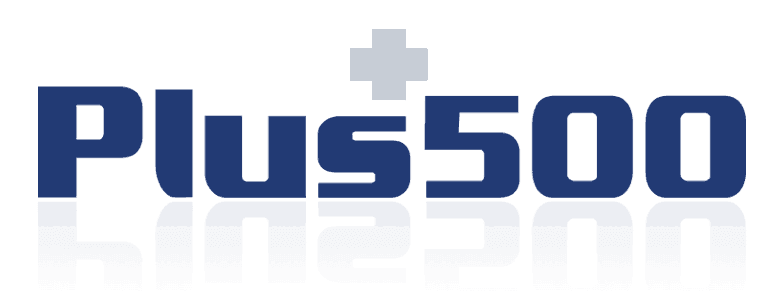

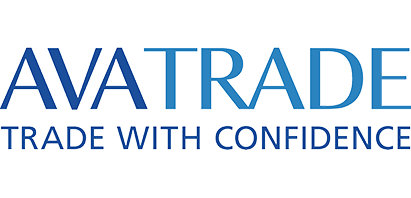

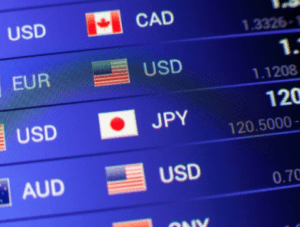 In a nutshell, forex trading is an investment sector that involves buying and selling currency pairs. The main concept is that you will be looking to make a profit when the exchange rate of the pair goes up or down.
In a nutshell, forex trading is an investment sector that involves buying and selling currency pairs. The main concept is that you will be looking to make a profit when the exchange rate of the pair goes up or down.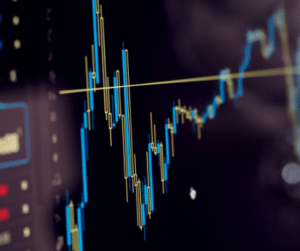 On top of buy and sell orders, you then need to make some considerations about whether you want to opt for a ‘market’ or ‘limit’ order! In simple terms, market/limit orders dictate what price your buy or sell order should be entered at.
On top of buy and sell orders, you then need to make some considerations about whether you want to opt for a ‘market’ or ‘limit’ order! In simple terms, market/limit orders dictate what price your buy or sell order should be entered at.

